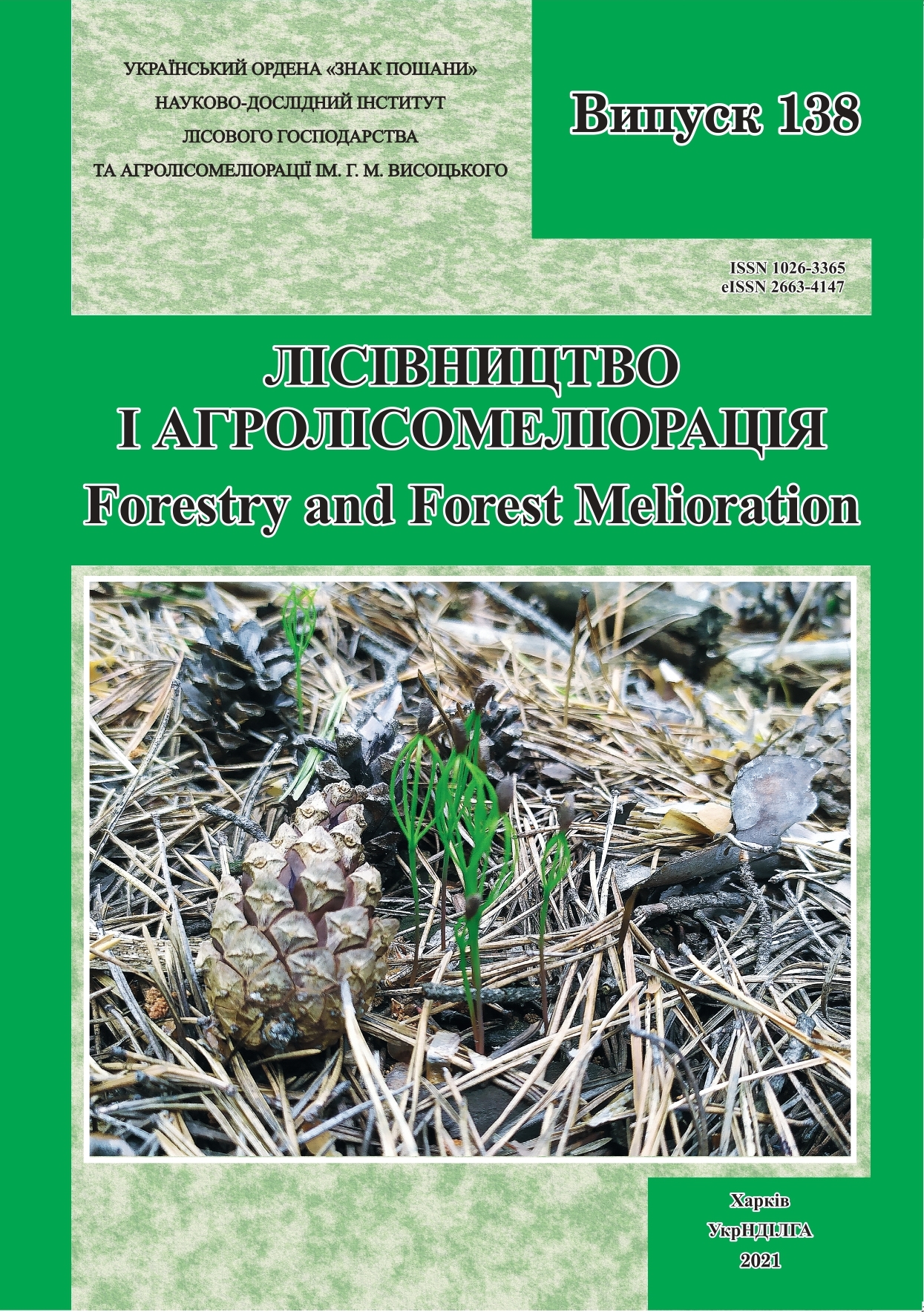Abstract
Introduction
Vegetative propagation of plants of the best cultivars are usually used when creating industrial plantations of hazelnuts. Propagation of hazelnuts by mound layering makes it possible to fully mechanize the cultivation between rows and partially the hilling process. This method, according to F. A. Pavlenko, V. L. Slyusarchuk, and I. I. Sytnik (1988), allows obtaining from 10 to 20 high-quality transplants from one bush. The study of O. A. Balabak and O. V. Balabak (2015, 2016) showed that there is a possibility to increase the yield of rooted layers of commercial-quality hazelnuts by means of the usage of different substrates. The researches aimed at improving this method are being done in other countries (Braun 2016, Braun & Wyse 2019, Beyhan & Aci 2020, Malvicini et al. 2009). It should be noted that the most time-consuming operation is installing of ties on the shoots. Some private gardeners use а plaster mesh instead of wire ties, but scientific journals do not provide any data on the results of such technology.
The aim of the research was to assess how suitable a usage of plastic and metal mesh is during the mound layering of different hazelnut cultivars.
Materials and Methods
The research was carried out on a hazelnut plantation established in 1985 in the arboretum of Kharkiv National Agrarian University (KhNAU) named after V. V. Dokuchaiev. The experiment on hazelnuts rooting by mound layers began in 2018. In the spring, 38 hazel bushes were cut down. Half of the stumps of six cultivars were covered with squares of 1.0 ? 1.0 m of plaster mesh, fixing the edges to the ground with metal hooks. The stumps of six plants were covered with plastic mesh (cells of 0.8 mm), those of five plants – with metal mesh (cells: 5 ? 13.4 mm, jumper: 0.8 mm) – one bush of each variety. We tied the shoots of the stumps which were not covered with a mesh, with some wire (control). Later, the lower part of the grown shoots of all bushes was simultaneously covered with some sawdust. The obtained rooted seedlings and the degree of development of their root systems were recorded twice during the digging of rooted mound layers in autumn 2019 and 2020. The shoots with different degree of root systems development in the variants of the experiment and different cultivars of hazelnuts were analysed.
Results
The observation made in autumn of 2019 pointed at the fact that the generalized average indicators for the four observed cultivars when using plastic and metal mesh were almost the same. The average yield of high-quality planting material averaged 57.6 and 59.0% when using plastic and metal mesh, respectively. It should be noted that when dragging the shoots with wire (control), the share of rooted shoots with medium and well-developed roots, as respectively, and the yield of high-quality planting material from one plant were significantly higher (average 70.1%). From 20 to 54 high-quality rooted shoots were obtained when using plastic mesh (average 31 pcs.) and from 18 to 30 when using metal mesh (average 26 pcs.). The number of such rooted shoots under control varied from 18 to 70 (43 on average).
During the research, the ability of hazelnut cultivars to form shoots was evaluated. Accounting was carried out for both the cultivars involved in the experiments with the mesh and for other cultivars. The number of formed shoots from one bush averaged 55, from 16 (‘Pirozhok’) to 90 (‘Borovsky’) in different cultivars. Such cultivars as ‘Borovsky’, ‘Lozovsky sharovydny’, ‘Kharkiv-4’, ‘Olympic’, ‘Serebristy’, ‘Veleten’, and ‘Prevoskhodny-2’ formed more than 50 saplings. Thus, 33-year-old hazelnut cultivars of Ukrainian selection are able to form an average of 50–60 shoots without additional watering and stimulation.
In 2020, in the experimental version using the mesh, the percentages of cuttings with a well-developed root system were from 0 to 23.5% in different varieties and from 7.5 to 46.6% in the control (the use of wire ties). The use of wire in that case was more effective than a mesh.
Conclusions
Hazelnut variety cultivars of Ukrainian selection are able to form from 58 to 64shoots from a bush. The findings proved that metal and plastic plaster mesh can be used for mound layering of hazelnuts. The average yield of high-quality 2-year-old planting material with the usage of plastic and metal mesh averaged 57.6 and 59.0%, respectively. Within the experiment we received an average of 31 high-quality rooted shoots using a plastic mesh and 26 shoots with the use of a metal mesh. During the cultivation of rooted shoots with wire (control), the yield of high-quality 2-year-old planting material from one plant averaged 70.1%. The number of such seedlings averaged 43 from a bush. The results of the research indicate that the use of wire is more efficient.

This work is licensed under a Creative Commons Attribution 4.0 International License.
